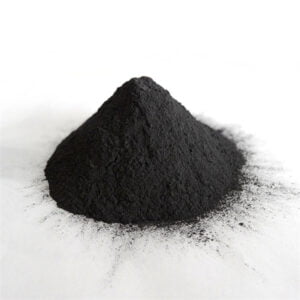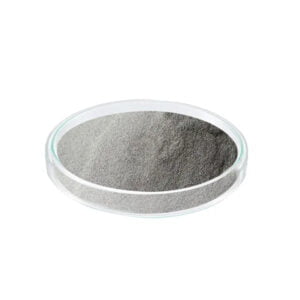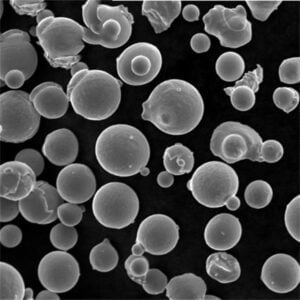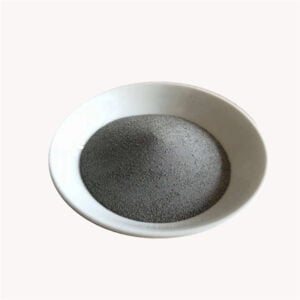電子ビーム製造
目次
電子ビーム製造 アディティブ・マニュファクチャリング・プロセスとは、集束した高エネルギー電子ビームを使用して、金属粉末粒子を層ごとに選択的に溶融・融合させ、複雑な3D部品を直接製造するプロセスを指す。
電子ビーム溶解(EBM)または電子ビーム粉末床融合とも呼ばれるこのプロセスは、造形速度、材料特性、表面仕上げ、幾何学的自由度など、従来の製造ルートでは実現できなかった能力を提供する。
このガイドでは、プロセス能力、材料、アプリケーション、システムサプライヤー、トレードオフの比較、および採用を検討する際のFAQについて、電子ビーム製造の概要を説明します。
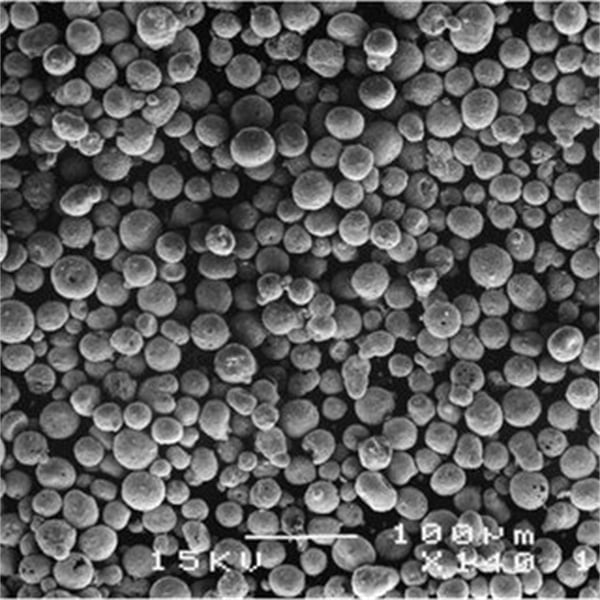
電子ビーム製造プロセスの概要
- 金属粉をビルドプレートに均一に散布
- 電子ビームは粉体を溶かすために決められた経路を走査します。
- プレートのインデックスが下がり、新しい層が上に広がる
- 熱予熱によりプロセス温度を維持
- 真空チャンバー
- 必要に応じて構造をサポート
- 必要に応じて最終パーツを切り離し、仕上げる
電子ビームは、導電性材料にレーザーよりも速く、深く浸透するため、残留応力が少なく、より高い造形速度を可能にする。
電子ビーム製造に使用される材料
さまざまな合金が加工され、それぞれが化学的性質と粒度分布に最適化されている:
| 素材 | 一般合金 | 概要 |
|---|---|---|
| チタン合金 | Ti6Al4V, Ti6Al4V ELI | 高強度、低重量の航空宇宙グレードのブレンド |
| ニッケル合金 | インコネル718、625、ヘインズ282 | タービン用耐熱・耐食超合金 |
| コバルトクロム | CoCrMo | インプラント用生体適合性耐摩耗合金 |
| ステンレス | 17-4PH、316L、304L | 高強度と耐食性 |
| 工具鋼 | H13、マレージング鋼 | 極めて高い硬度/耐摩耗性 |
| アルミニウム合金 | スカルマロイ | カスタムアル幅急速凝固速度 |
結晶粒や欠陥構造の制御といった利点は、機械的特性の向上を促進する。
特性と公差
カスタマイズされた合金特性に加えて、主要なプロセス能力には以下が含まれる:
| 属性 | 説明 |
|---|---|
| 表面仕上げ | 粗さ5μmと低く、形状によっては最終的な使用に十分な滑らかさ。 |
| 機能分解能 | 100μmまでの微細なディテールをプロセスパラメーターでサポート |
| 精度 | ± 0.2%(100 mmの部品寸法で50 μmの偏差あり |
| 密度 | 理論最大値99.8%以上、金属AM法で最高 |
| ビルドサイズ | 長さ1000mmを超えるコンポーネントも可能。 |
| プロトタイピング | 金属を必要とするエンジニアリング・モデルに最適。 |
| 製造 | 航空宇宙産業と医療産業が最終用途部品製造プロセスの認証を開始 |
その一貫性と品質は、需要の高いアプリケーションを可能にする。
電子ビーム製造 アプリケーション
| 産業 | 用途 | コンポーネント例 |
|---|---|---|
| 航空宇宙 | 構造部品、エンジン部品 | タービンブレード、フレーム、マウント |
| メディカル | 整形外科用インプラント、手術器具 | 股関節、膝関節、頭蓋骨インプラント、クランプ |
| 自動車 | 軽量パフォーマンス・コンポーネント | タービンホイール、マニホールド |
| インダストリアル | 最終用途金属生産 | 軽量ロボットアーム、流体ハンドリング部品 |
さらに、デザイン、素材、性能の相乗効果を活用した特殊用途もある。
システム・メーカーと価格
| メーカー | 説明 | 基本価格帯 |
|---|---|---|
| アルカム(GE) | 様々なEBMシステムモデルを持つ先駆者たち | $1.5M – $2M |
| ベロ3D | 先進的なシステムは、より細かいディテールと高いビルドを約束する | $$$$ |
| ジェオル | 研究と小規模生産に重点を置く | $$$ |
材料費、アルゴン代、電気代などの運転経費は、作り方にもよるが、1日あたり$100~$1000以上になる。
電子ビームと他のプロセスのトレードオフ
長所だ:
- パウダーベッドレーザー溶融よりも高い造粒速度
- レーザー法よりも低い残留応力
- 卓越した精度と表面仕上げ
- 特性のための高純度の投入材料
- 将来の潜在的生産量が高い
短所だ:
- 他のパウダーベッド技術に比べ、まだ成熟途上にある
- レーザー方式ほど大きくないサイズ能力
- 素材の入手可能性はまだ広がっている
- 高い設備所有コスト
- サポートが必要な形状の制約
適切なアプリケーションのために、比類のないパフォーマンスの可能性。
よくあるご質問
最大部品サイズは何で決まりますか?
システムモデルの最大スキャン領域、スキャン戦略の制限、熱応力、粉末の広がりやすさの制約、および部品点数により、テストされた長さ~800mmまでのサイズ能力が定義される。
プロセスは材料特性にどのような影響を与えるのか?
制御された熱プロファイルによる急速な冷却速度は、強度を高める微細構造を付与する。パラメータは残留応力に対してバランスが取れています。
表面仕上げの能力は何で決まるのか?
スポットサイズ、ビームパワー、スキャン戦略、その後の粉末層の厚さ、微粒子汚染、熱勾配の影響を組み合わせることで、卓越した加工時表面品質を実現することができる。
どのような安全上の注意が必要ですか?
パウダーハンドリングの保護に加え、電子ビームシステムには、ファラデーケージ遮蔽、安全インターロック、最大占有暴露時間計算を備えた認証室が必要である。
典型的な後処理工程は?
気孔率を低減するための熱間静水圧プレス、機械的性能を向上させるための熱処理、サブトラクティブ機械加工などの後工程は、部品の仕上げに一般的に採用されている。
シェアする
MET3DP Technology Co., LTDは、中国青島に本社を置く積層造形ソリューションのリーディングプロバイダーです。弊社は3Dプリンティング装置と工業用途の高性能金属粉末を専門としています。
関連記事
Met3DPについて
最新情報
製品

3Dプリンティングと積層造形用金属粉末






